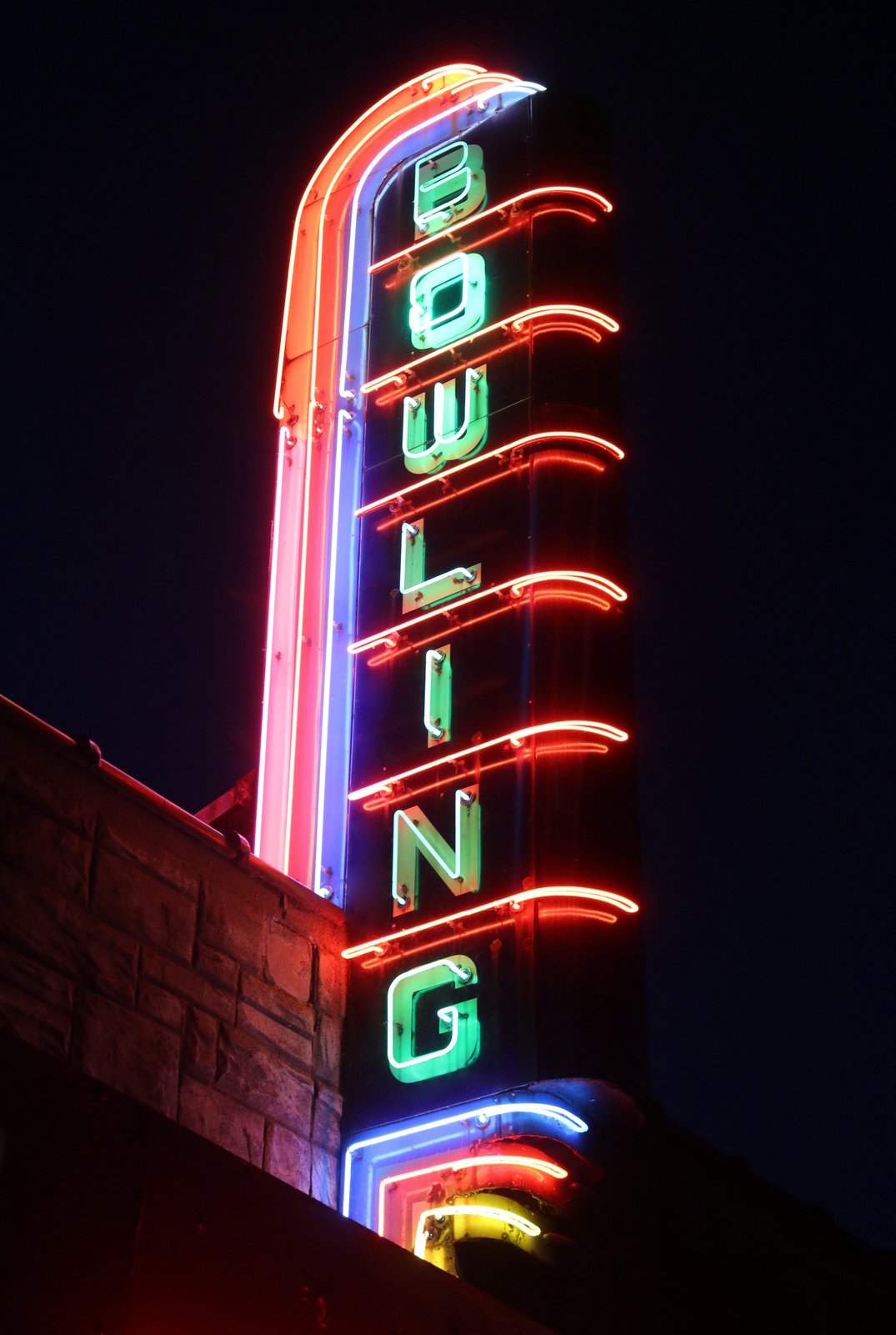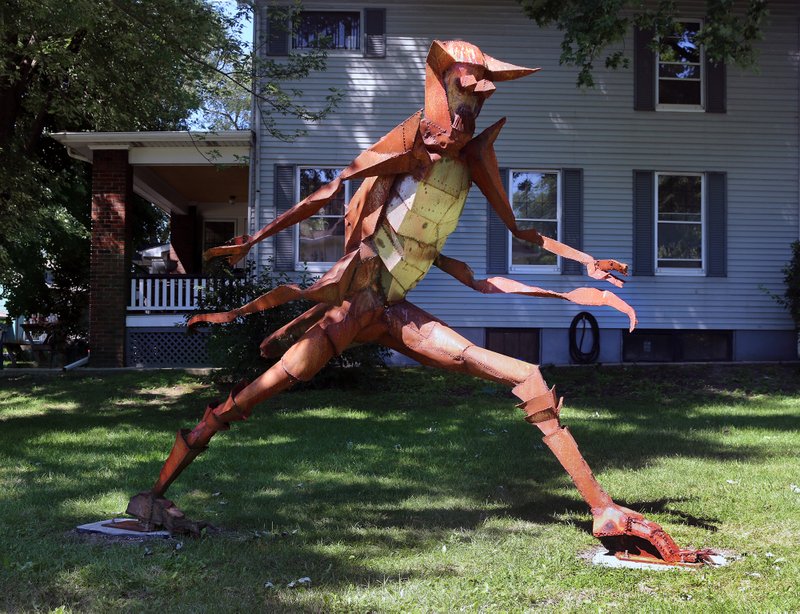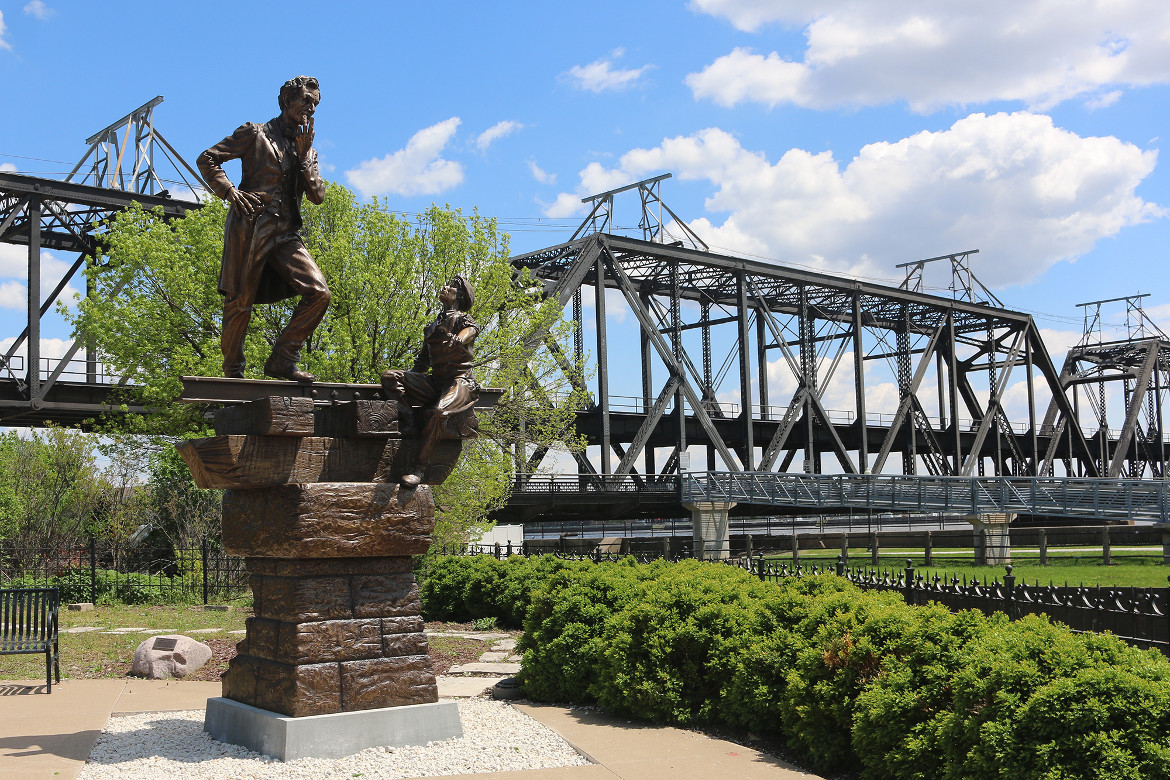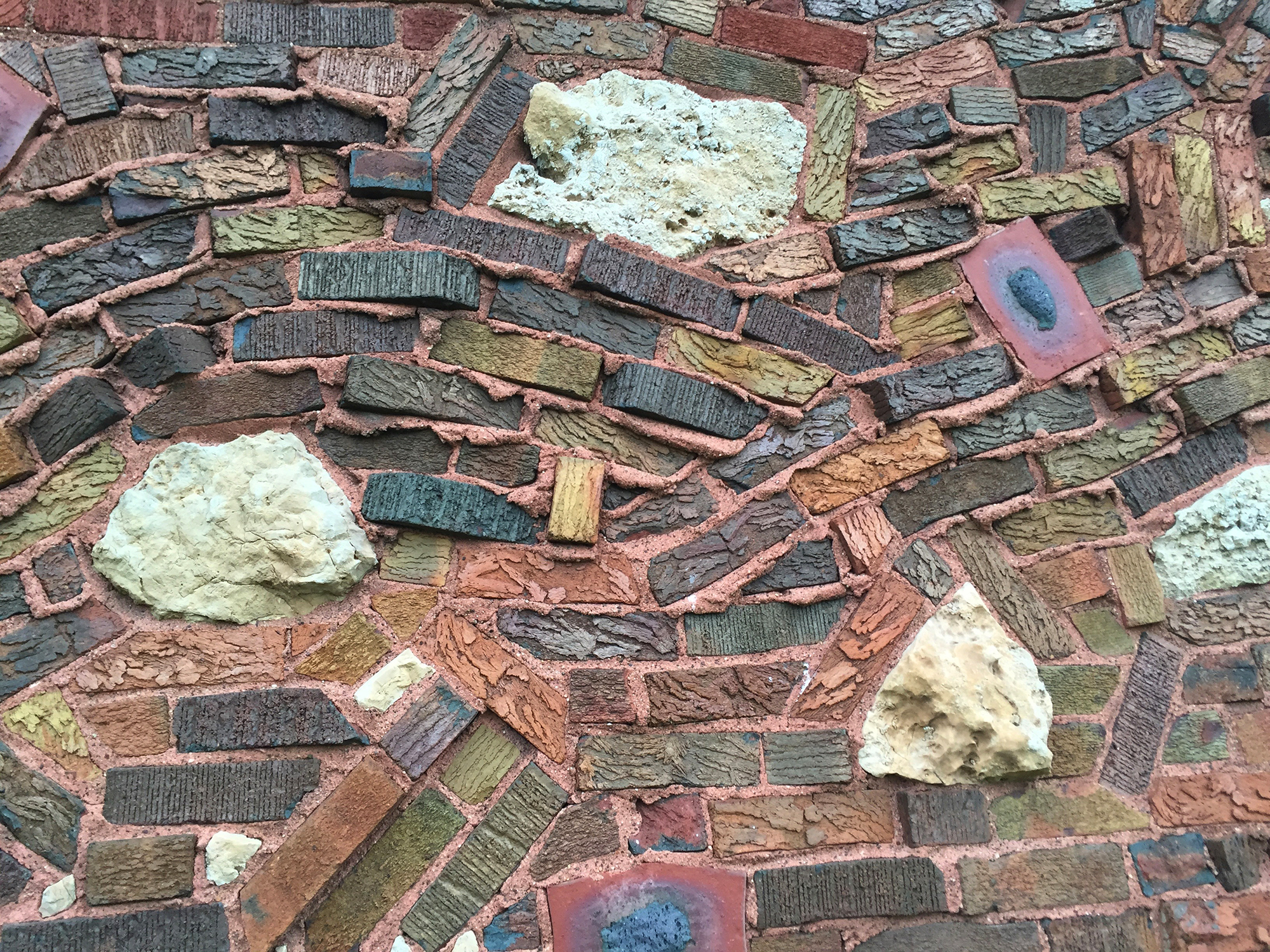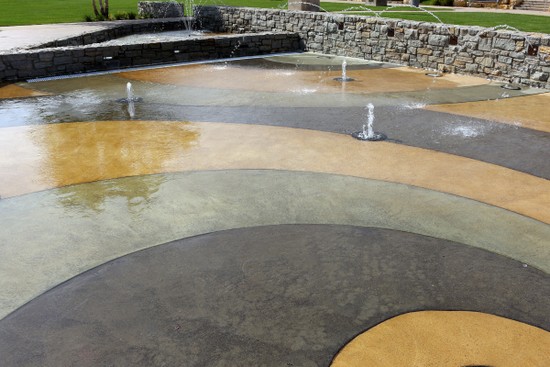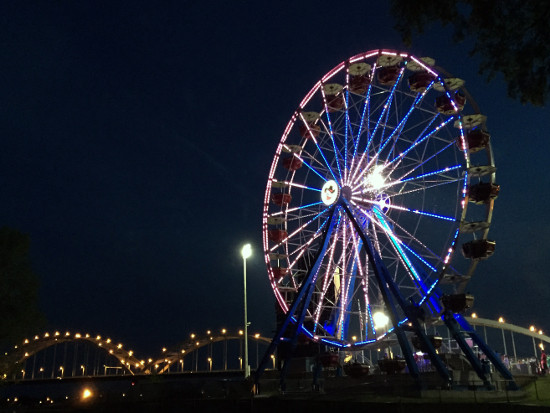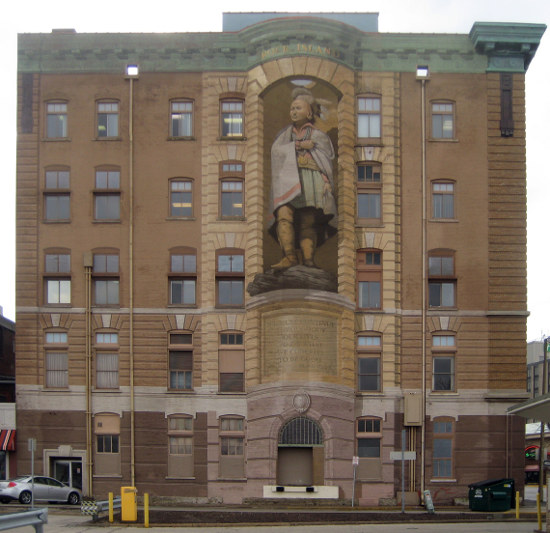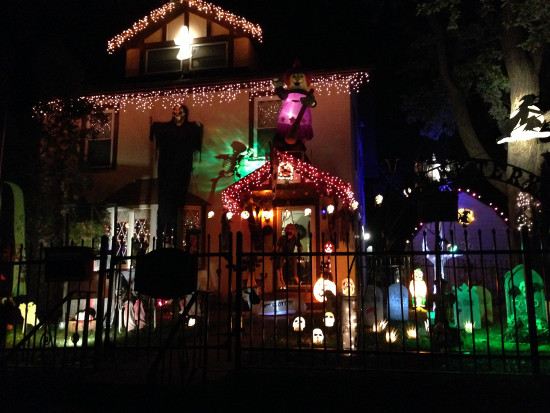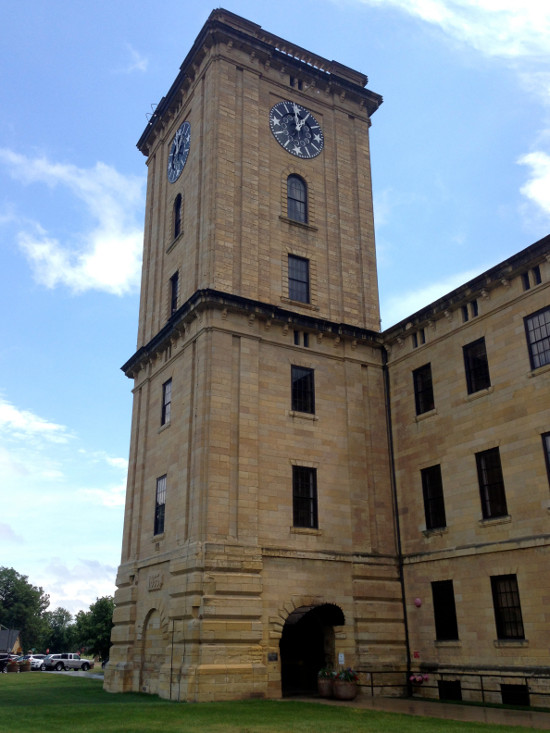Downtown Davenport was once bathed in the bright glow of neon signs. In a photo taken from the intersection of Main and Second streets in the 1940s, the Hansen’s Hardware neon sign in the foreground rises several stories over the street below. So does a nearby Kaybee sign. There are, seemingly, a dozen or more smaller neon signs in the block.
Today from the same vantage point, we see U.S. Bank, the Figge Art Museum plaza, and the Charles J. Wright Ground Transportation Center. The prominent Hansen neon sign? Long gone. So are all of the other large neon signs in the photo: Kaybee, The Hub, Three Sisters, Baker’s Shoes. Also gone are the even-more-impressive neon signs rising high above the downtown theatre marquees.
Neon signs from this past era, fortunately, can still be found elsewhere in the Quad Cities.

